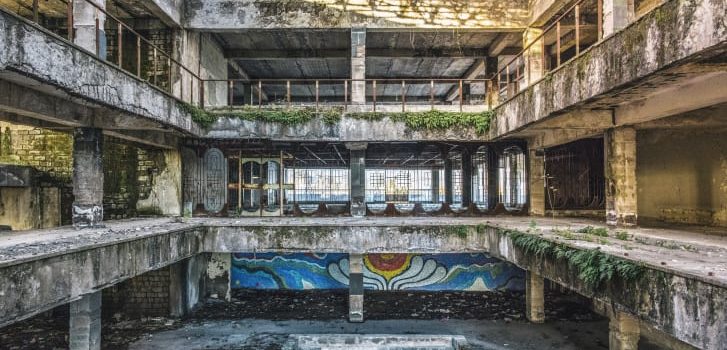CNN has recently published an article about the abandoned sanatoriums of Tskaltubo, a town in the west part of Georgia. The article states that throughout the Soviet era, the USSR built 186 sanatoriums across the state. Tskaltubo spa is considered to be one of the best sanatoriums.
The natural springs emanate from limestone massifs deep beneath the ground, releasing radon-carbonated and mineral-enriched water. According to the European Historic Thermal Towns Association, the spa was regarded as “waters of immortality” dating back to 7th century. The springs are believed to have healing properties.
After the fall of the Soviet Union, the sanatorium lost its function, vines, bushes, and weeds found their ways through the pillared hallways into the bathing rooms. Later in 1992, a bloody conflict broke out between government forces and separatists who fought for the independence of Abkhazia, a disputed autonomous republic in northwestern Georgia. After the fall of Sukhumi, the capital city of Abkhazia, thousands of Georgians were forced to flee the city. The refugees found the deserted corridors of the Tskaltubo sanatorium as a shelter.
The refugees have never left the place. The original settlers have had children, and now grandchildren. They had to adapt and create makeshift homes.
The design of the sanatoriums was a model of progressive Soviet architecture. The architecture was a fusion of what is now known as classical Stalinist design and ethnic Georgian decor, as well as Gothic and Roman features.
“They were frozen in time and objects were just sitting there, as if someone had just got up and left. It was as if the buildings were still used by the Soviet citizenship. But the objects had now become artifacts.” – said the photographer Ryan Koopmans. The article is accompanied by his photographs taken in Tskaltubo.
Leaving behind the bad times, the government has begun to re-home refugees and developers plan to relaunch the spa as a luxury tourist destination. Thus, these photographs of Tskaltubo sanatorium might soon be the last memory of the era.
Source: Georgianjournal.ge, Photo: Georgianjournal.ge

